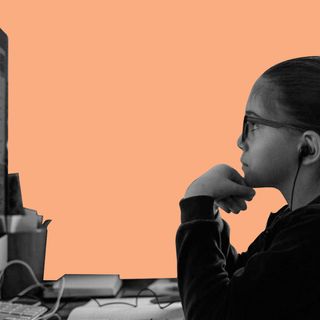The dullness of the monsoon can be depressing; the stark white light of the hospital can make people antsy; soft yellow light can be romantic or mellow — these are associations that we popularly attach to lighting, an important yet understated aspect of our environment that research shows can significantly impact mood and health. With the onset of monsoon, days are becoming darker, which can exacerbate the monsoon depression people usually experience around this time.
What role does light play?
Light facilitates more than just our vision. Research shows light that is detected by human retinas — specifically by a group of cells called intrinsically photosensitive retinal ganglion cells (ipRGCs) — can affect learning and mood by interacting with neurons in the hypothalamus, a region that communicates sensory information to other areas of the brain, and plays a part in releasing hormones and regulating body temperature.
Related on The Swaddle:
Blue Light Emitted By Gadgets May Kill Brain Cells, Accelerate Ageing
One reason for why light can influence us deeply is its direct association with the circadian rhythm of the body. Humans rely on predictable cycles of daylight to organise their days, which translates to our bodies responding to the light-dark cycles of the environment in specific ways — bright, sunny light signals the time to wake up and exert energy in daily routines, while darkening signals time to rest and conserve energy. In the monsoons, this environmental cycle is disrupted, especially when days are only slightly brighter than nights. This association with darkness is one reason heavy monsoons are often thought to inspire drowsiness, laziness, and depression.
But we can substitute these fluctuations with artificial light, which is another reason why humans’ circadian rhythms are often confused. Using electric lights at night, for example — from electric bulbs or computer or phone screens — desynchronizes circadian rhythms and often interferes with sleep patterns, enabling people to stay up later in the night that often shortens sleep cycles. This irregular light cycle, in turn, can lead to a host of mood disorders such as depression, according to research. One way to tackle this ubiquitous cycle of artificial light interrupting our perception of day and night is bright light therapy, which is a common treatment used to correct humans’ sleep cycles by exposing them to bright light in the morning, in order to mimic natural daylight that is often absent in the winters.
In addition to the presence or absence of light, the quality and the intensity of light can also affect humans’ neurological processes. For example, the brighter the light, the more intensely humans feel emotions, both positive and negative, found a 2014 study. This can happen because of humans confusing bright light with heat, which is known to trigger intense emotions, researchers said. So, it’s not necessary that sunlight, which we commonly associate with bright, happy, energetic feelings, will alter all individuals’ moods from negative to positive; for people who are already depressed, the brightness of sunlight, for example, can lead them to experience their depression more intensely. Researchers advise people trying to make rational decisions to do it in dim lighting, as brightness is likely to inject an emotional reaction into any decision-making process.
Related on The Swaddle:
The Dim Light In Our Offices Is Making Us Dumber
Extrapolating from intensity, the color of temperature of light — blue-white or orange-yellow — can also impact humans’ reactions to it. Studies show cool-white light, found in most hospitals, classroom and offices, help people concentrate better, thereby increasing productivity. This kind of light at nighttime, however, has a stronger disruption impact, as it suppresses melatonin — the sleep-wake hormone — two to three times as much as other kinds of light. Orange-yellow light, on the other hand, is found to have more of a relaxing effect on people, thereby the better, less disruptive option for nighttime.
As we deal with severe fluctuations in mood under Covid19 lockdown, it might help to keep in mind the immense impact light can have on us, and how we can manipulate our surroundings to better handle our days and nights, even if we can’t control much else.




